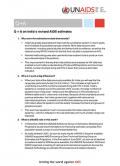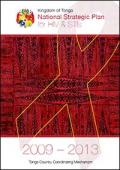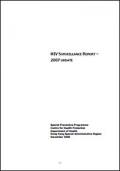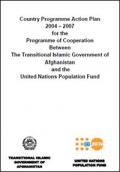What's New
Displaying results 4241 - 4250 of 4914

Resource | Presentations,
This is a presentation on Unfunded Response: Financing MSM Program in Asia and the Pacific.

Resource | Laws and Policies,
The core of HIV/AIDS policy was the detection of hidden HIV cases through compulsory testing. In addition, the surveillance of HIV positive individuals was enforced as a follow-through measure. Thus, traditional public health measures were fully utilized in order to prevent the spread of HIV/AIDS.
As of today, medical considerations dominate the South Korean’s government HIV/AIDS policy. There is no sincere regard to issues relating to sexuality and risk taking in policy making.

Resource | Publications,
The Lao PDR started a participatory, consultative process to update its National Strategy and Action Plan for 2006-2010 in early 2005. Based on the mid-term review of the national strategy and action plan 2002-2005, stakeholder meetings at provincial and at central level provided the opportunity to discuss achievements, obstacles and opportunities to stabilize the HIV epidemic in Laos at the current low levels. The final consultation was held on 23 January 2006, and the strategy and action plan were endorsed by the National Committee for the Control of AIDS on 24 January 2006. At the same time the national policy was revised.

Resource | Publications,
The Asian Epidemic Model (AEM) Projections for HIV/AIDS in Thailand 2005-2025 were prepared by the Analysis and Advocacy Project (A2) in Thailand, in collaboration with the Thai Working Group on HIV/AIDS Projections, and with funding support from the United States Agency for International Development (USAID). The present projections are an update of the projections prepared in 2000.

Resource | Fact Sheets,
The improvement in the way that India collects and analyses its HIV data has enabled a much better understanding of India’s AIDS epidemic and has shown that the number of people living with HIV is lower than previous estimates indicated.

Resource | Publications,
The AIDS Medium Term Plan IV of the Philippines was conceptualized and prepared through a robust and wide consultative process which was inclusive of civil society, different agencies of the government, multi lateral and bilateral agencies as well as corporates. The period of this plan is from 2005 to 2010. The Philippine National AIDS Council is responsible for overseeing the program implementation plan of the country. In this regard, the PNAC commissioned a mid term assessment of the plan in order to draw lessons from the first half of the plan, and to apply these in the second half of the plan i.e. 2009 and 2010. The assessment will also look into the performance of the council, and suggest improvements for the same.

Resource | Publications,
The 2009-2013 Strategic Plan identifies strategies to address these issues and incorporate lessons learnt in the future national response to HIV. The Plan proposes a safer and more resilient Tongan population working together in the treatment, care and support of those living with HIV - and help prevent the spread of STIs, HIV and other communicable diseases so that people can live free and healthy lives in dignity and unity in a peaceful and prosperous Tonga. Its goal is to reduce the spread and impact of HIV and other STIs through a whole-of- country approach, while embracing the groups that are most at risk such as people living with and affected by HIV and Other STIs.

Resource | Publications,
Hong Kong, located in Asia the new burning place of HIV infection, is still having a relatively low prevalence of HIV infection. While sexual transmission is the predominant route of transmission in Hong Kong, an upsurge of infection in injecting drug users is a concern from the experience in other Asian localities. Various public health measures in Hong Kong have kept the HIV prevalence of drug users at low level, as compared with neighbouring cities.

Resource | Publications,
The program described herein has been agreed jointly by the Government and UNFPA. This Country Programme Action Plan, consists of 10 parts wherein the general policies, priorities, objectives, strategies, management responsibilities and commitments of the Government and UNFPA are described, and two Annexes. UNFPA will enter into a formal agreement with the Government in the near future as to its operations in Afghanistan.

Resource | Guidelines,
Now more than ever, greater attention to human rights and legal issues in the context of HIV/AIDS is needed. Universal access to prevention, treatment, care, and support will never be achieved unless we take concrete steps to put human rights at the center of the fight against HIV/AIDS.
This guide has been prepared by the Law and Health Initiative of the Open Society Institute’s Public Health Program to highlight the many legal and human rights-themed sessions, presentations, and other events at the XVII International AIDS Conference and its satellite events in Mexico City, Mexico.





